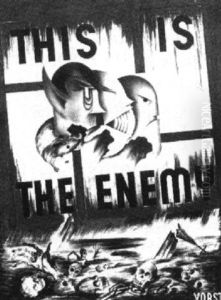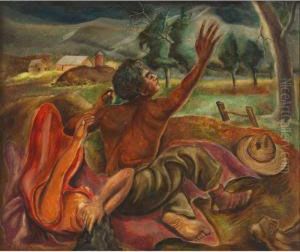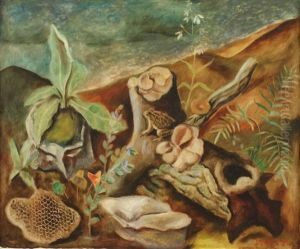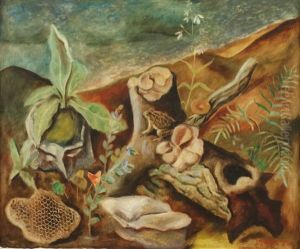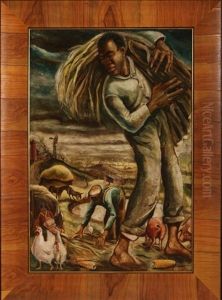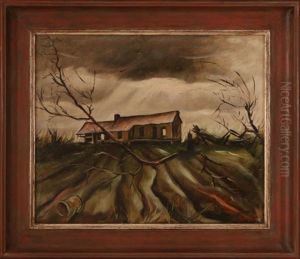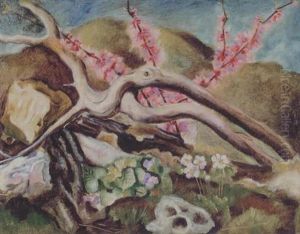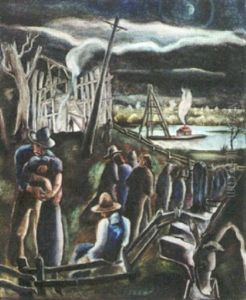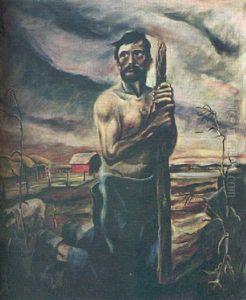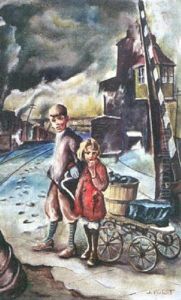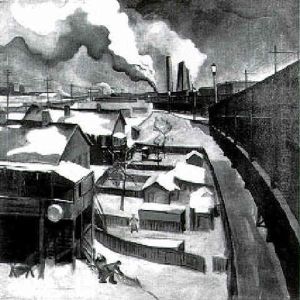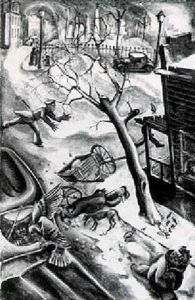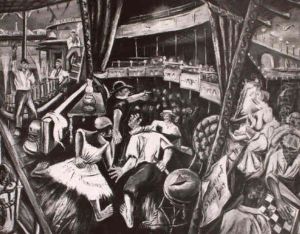Joseph Paul Vorst Paintings
Joseph Paul Vorst was a German-American artist, born on February 14, 1897, in Essen, Germany. He was part of the social realism movement and is best known for his works that depict the American Midwest during the Great Depression. Vorst emigrated to the United States in 1925 and became a citizen in 1939. His work often reflected his sympathy for the struggles of the working class and the poor, and he was deeply influenced by other social realist artists of the time, such as Thomas Hart Benton and Wood Benton.
Before moving to the United States, Vorst served in the German army during World War I, which had a profound impact on his outlook and art. He studied at the Folkwangschule in Essen and later at the Kunstgewerbeschule (School of Arts and Crafts) in Munich. In America, he settled in St. Louis, Missouri, where he became a part of the local art scene and taught at the St. Louis School of Fine Arts at Washington University. His works during this period were characterized by a strong sense of composition, dramatic use of light, and a focus on social themes.
Throughout the 1930s and 1940s, Vorst's work often reflected the economic hardship of the Depression era. He created murals for the Works Progress Administration (WPA), a government program designed to provide work for artists among others during the difficult economic times. His murals included themes of rural and urban America, highlighting the strength and perseverance of Americans during those challenging years.
Vorst's career was cut short when he died suddenly of a heart attack on December 28, 1947, in St. Louis, Missouri. Despite his relatively short career, his contributions to American art and social realism have been recognized posthumously. His works are held in several prestigious collections, including the Smithsonian American Art Museum and the Saint Louis Art Museum. Joseph Paul Vorst's legacy endures as an artist who captured the spirit of America during one of its most trying times through the power of his art.
